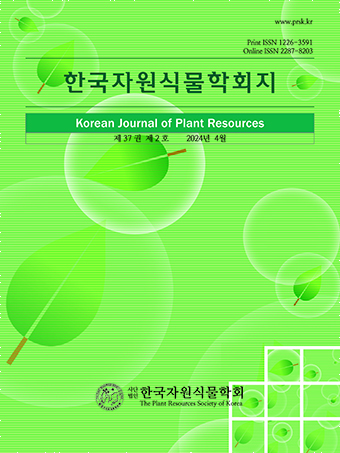Research Article
Abstract
References
Information
Yoon, C.-Y., K.-W. Park, J. Jung, J. Hyun and J.-H. Kim. 2019. A report on the taxonomic characters, ecological risk and weed risk assessment of un-introduced plants which are designated in law by the Ministry of Environment in Korea as environmentally harmful species (I). Korean J. Plant Res. 32(5):543-558 (in Korean).
- Publisher :The Plant Resources Society of Korea
- Publisher(Ko) :한국자원식물학회
- Journal Title :Korean Journal of Plant Resources
- Journal Title(Ko) :한국자원식물학회지
- Volume : 34
- No :3
- Pages :223-248
- Received Date : 2021-05-14
- Revised Date : 2021-05-26
- Accepted Date : 2021-05-27
- DOI :https://doi.org/10.7732/kjpr.2021.34.3.223




 Korean Journal of Plant Resources
Korean Journal of Plant Resources







